By noon (10 December, 2014) I had to head back to my hotel to get things together for my trip to Cartagena airport. I was not quite ready to end my one free day in Colombia, though, so after a quick trip to my room I was off again to see what I could find along the nearby beach.
Our hotel (and SPAW meeting venue), the Almirante, was in Boca Grande, essentially a hotel-dotted sand spit lined with crowded beaches (rather like Cancun, but less garish).
Its beaches are popular, at least with Colombians, but the water off them is not of the cleanest. Though I had brought my bathing suit I was not tempted to take a dip.
Its beaches are popular, at least with Colombians, but the water off them is not of the cleanest. Though I had brought my bathing suit I was not tempted to take a dip.
Instead, I followed the road paralleling the beach behind the hotel, heading for what seemed to be a quite substantial crowd of seabirds. I soon found the reason: fishermen landing their catch right in the middle of a bathing beach.
The seafood restaurants on the beach could at least claim that their fish was fresh, if not (given the state of the surrounding waters) pristine.
The birds didn't care. As the fishermen pulled in their nets they were besieged by hordes of Brown Pelicans (Pelecanus occidentalis).
Obviously clustering around a boat loaded with ready-caught fish was preferable to hunting for prey in the surf.
Obviously clustering around a boat loaded with ready-caught fish was preferable to hunting for prey in the surf.
The word of the boat's arrival had clearly spread, and new groups of pelicans continued to arrive to claim their share.
Soaring overhead, and plainly waiting for a chance to besiege the pelicans in their turn, were numbers of Magnificent Frigatebirds (Fregata magnificens), one of the most superb fliers on earth and a particular favourite of mine.
Among the pelicans I found a smaller, darker bird - a young Brown Booby (Sula leucogaster) in extremely ragged moult.
This photo, by the way, shows why boobies and pelicans used to be called 'totipalmate' seabirds: the webbing on their feet stretches to all four toes, making them powerful tool for swimming and diving. Add bright colour, as Red-footed and Blue-footed Boobies (Sula sula and Sula nebouxii) do, and they are useful as well for showing off in display.
The pattern of the bird's underwings, with dark coverts and a light patch over the tertials, suggested to me that this might in fact be a young Red-footed, but I now think that it is n fact a Brown.
Anyway, it was pretty much the bird of the day for me, not just because of what it was but because it was so close...
Other birds also had their eyes on the fishermens' catch. This is a Royal Tern (Thalasseus maximus).
Snowy Egrets (Egretta thula) stalked the beach near the growing pile of fish.
In the New World this most graceful of egrets sometimes fulfils, as here, the ecological role of the reef egrets of the Old World tropics.
In the New World this most graceful of egrets sometimes fulfils, as here, the ecological role of the reef egrets of the Old World tropics.
Another Great Egret sat, instead, in a nearby tree, beneath a gaggle of roosting pelicans. I didn't realize it at the time, but it is clearly blind in at least one eye. An encounter with a fishhook, perhaps?
Great-tailed Grackles (Cassidix, or Quiscalus, mexicanus) were everywhere, even at the edge of the beach. Like its close cousin the Boat-tailed Grackle (Cassidix major) the male is considerably larger than the largely brown female.
Great-tailed Grackles (Cassidix, or Quiscalus, mexicanus) were everywhere, even at the edge of the beach. Like its close cousin the Boat-tailed Grackle (Cassidix major) the male is considerably larger than the largely brown female.
By now I had to think about getting back to the hotel, but I still hoped that I might turn up some interesting birds on the way. As a result I followed a somewhat circuitous route, looking for patches of trees and cross-crossing local plazas. This did help me turn up a Common Ground Dove (Columbina passerina) that, like the egret, seemed to have suffered an injury - this time, to one foot.
I had more luck on a sandy roadside verge about a block from the hotel. I had been seeing Cattle Tyrants (Machetornis rixosus) out the hotel windows, but this one was particularly watchable - far too engrossed in snapping insects from an automobile bumper to worry about a mere bird photographer.
Only a few metres away I found an equally cooperative pair of Saffron Finches (Sicalis flaveola), birds I have been fond of since first encountering them as a child in Jamaica, where they are introduced. My word, that was almost sixty years ago!
Perhaps the most surprising bird was a Yellow-headed Caracara (Milvago chimachima), here near the northern edge of its extensive range. I would not have thought of this as an urban species, but it is an an adaptable carrion-eater and can surely find plenty to eat around the hotels that fringe the coast. It made up, at least a little, for my failure to get out into the countryside this time around.










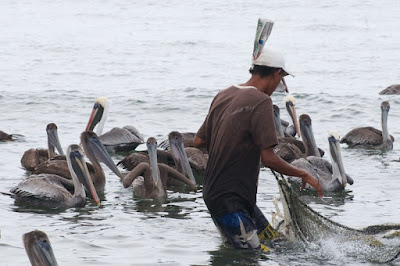






















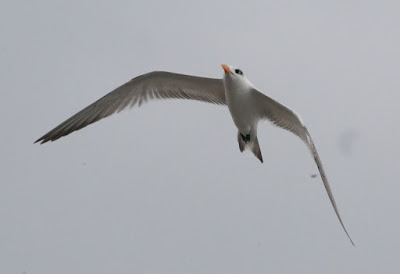




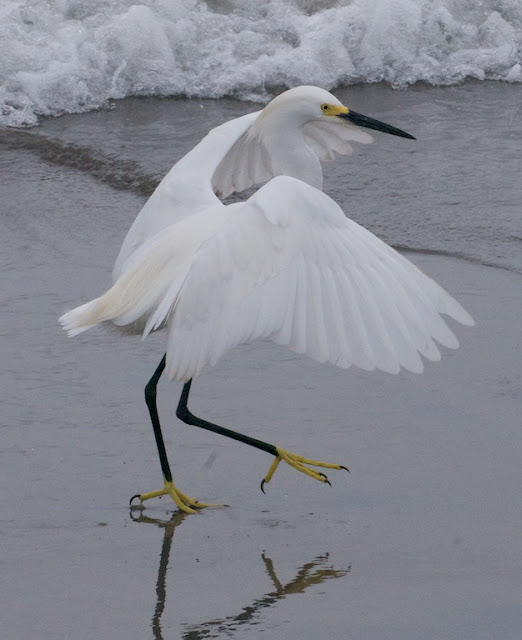






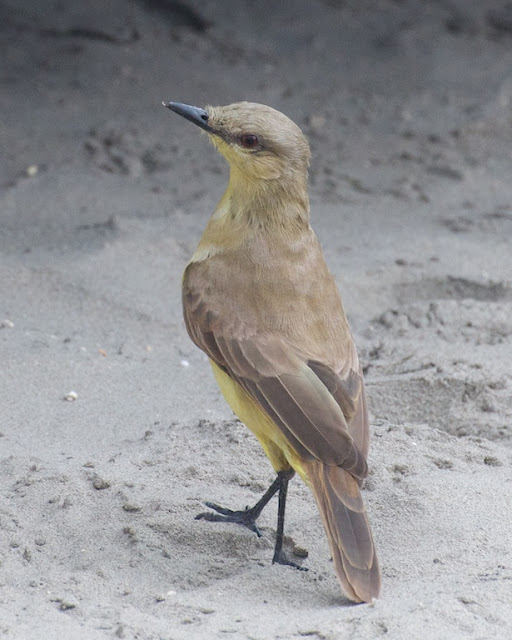
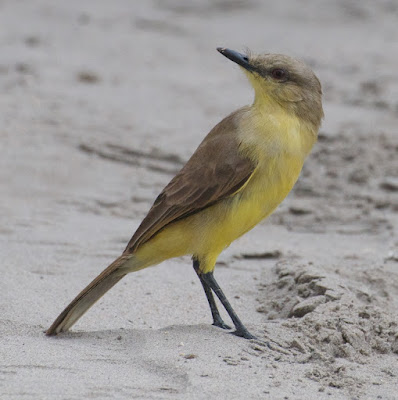



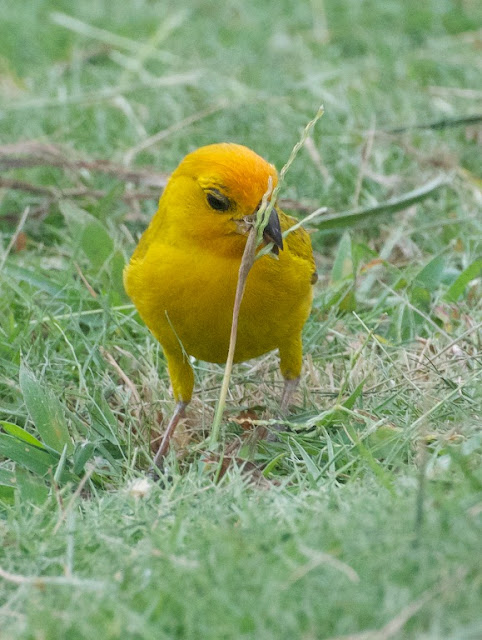

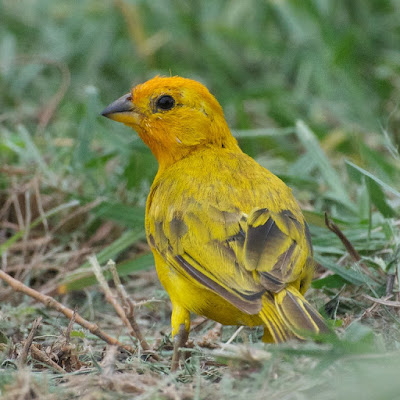


No comments:
Post a Comment